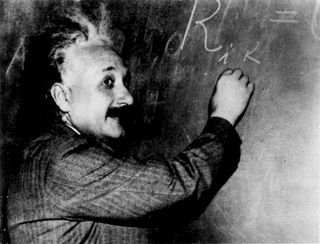Unified Field Theory: Tying It All Together

For centuries, researchers have attempted to describe all the fundamental forces of nature and how they interact in a single theory. This unified field theory stumped the likes of Albert Einstein, who worked on the theory for many years.
In physics, a field is an area under the influence of some force, such as gravity or electromagnetism. A field theory refers generally to why physical phenomena happen, and how these phenomena interact with nature.
The four fundamental forces are:
- Electromagnetic interaction: Electromagnetism refers to interactions that affect electrically charged particles, particularly for types of light. The particle for this force is called the photon.
- Strong interaction: This is the force that binds together neutrons (neutrally charged particles) and protons (positively charged particles) into a nucleus inside the atom, which is the basic unit of a chemical element. The particle for this force is the gluon.
- Weak interaction: This force causes some types of radioactivity, and is active on small particles such as electrons, quarks and neutrinos. The particles for this force are the W and Z bosons.
- Gravitational interaction: Gravity is the attractive interaction that affects all bits of the universe, whether large or small. While undiscovered, the theoretical particle for this force would be the graviton.
Einstein's work
Scottish physicist James Clerk Maxwell created the first field theory in the mid-19th century, concerning electromagnetism. Then in the early 1900s, Einstein postulated his theory of general relativity, which has to do with the field theory of gravitation.
Einstein attempted to develop a unified field theory in the 1920s, but he was hindered because only some of the forces were known at the time. While electromagnetism and gravity were well recognized, studies of the atom were in their infancy; at the time, the electron and the proton were the only known subatomic particles, according to the American Physical Society.
Einstein (collaborating at first with Jacob Grommer) built on the work of other scientists, who were trying to render space-time into five dimensions. Specifically, Einstein's work on space-time would take up four dimensions, and an extra set of equations (representing Maxwell's equations for electromagnetism) would be the fifth. Scientists who worked on this problem include Hermann Weyl, Theodor Kaluza and Oskar Klein.
Einstein's first paper on the theory was in 1922, echoing work that was published by Kaluza in 1921. Later in his career, according to APS, Einstein also tried a unifying theory that would generalize the metric tensor (which measures curvature of space and time). Einstein tried both methods for the last three decades of his life, with no success. He even asked for his notes to be brought to him the day before he died, APS said.
Newer approaches
One limitation with Einstein's work was at first his rejection, and then his ignorance of quantum theory (which he acknowledged as the years went on.) But even today, scientists who are familiar with quantum theory are also having difficulty coming up with a unified theory.
There are many approaches being considered, but the most promising, according to APS, involves string theory. The theory "describes all elementary particles as vibrating strings, with different modes of vibration producing different particles."
In the 1980s, physicists (led by John Schwarz and Michael Green) concluded that string theory could work because of its vibrations. Similar to how a violin plays different notes, the theory went, different vibrations in strings of nature would create different particles. In the mid-1990s, Edward Witten proposed more exact theories of string theory, now called M-theory. His work expanded string theory dimensions from six to seven, and showing new ingredients of the theory (including branes, or membrane-like objects in various dimensions.)
Work in this field is very much emerging, but researchers are trying to learn more physical properties of the string by studying the subatomic particles produced in particle accelerators, such as the Large Hadron Collider. Among other directions, the LHC experiments are intended to look for supersymmetry, or a supposed mathematical property where every particle species would have a partner particle species.
Physicists caution that a weakness of string theory is it has not yet been confirmed by data. There are also other approaches to unified field theory, such as quantum gravity, which tries to describe gravity in the terms of quantum mathematics.
Additional resources
Sign up for the Live Science daily newsletter now
Get the world’s most fascinating discoveries delivered straight to your inbox.
